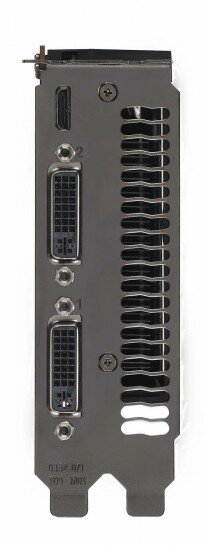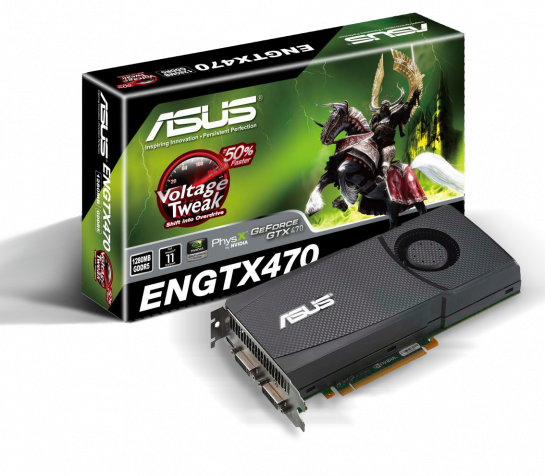AMD had the DX11 graphics card market all to themselves for a while there, but now they’re joined by NVIDIA’s new GPUs. Long anticipated by many a gamer, these new designs are optimized for DX11 performance and should help NVIDIA fans meet the latest big game releases with pride.
While leading AMD-derived products such as the magnificent ASUS EAH5970 have been wowing people since late last year, fresh arrivals ENGTX470 and ENGTX480 have a host of features worth noting.
Formerly codenamed Fermi, these cards boast the most cutting-edge GPU technology available from NVIDIA, packaged by ASUS with a raft of cool ad-ons and performance-boosting attributes.
The tech stuff
Both the ENGTX470 and ENGTX480 possess completely new core designs, clocked 607Mhz and 700MHz, respectively. They are the most capable GPUs from NVIDIA ever, if judged by their efficiency – both are 40nm fabrications, making them relatively energy efficient.
The more mainstream of the two is the ENGTX470, which comes with 1215 stream processors and 1280MB of GDDR5 memory running at an actual speed of 3.35GHz. The memory interface is 320-bit. With these numbers at hand, it’s obvious this card can handle anything you throw at it right now, plus it’s fully DX11 compliant.
But if this isn’t enough, go for the ENGTX480, the more up market and gamer-focused offering. It has a core running at 700MHz, and over 1400 stream processors. The memory interface is 384-bit, and the board ships with 1536MB of 3.7GHz GDDR5.
Factor 11
So what’s all the hoopla about DX11? Like its predecessors, it adds shortcuts, routines and programming aids to make software run faster, tighter and in lovelier detail. Tessellation is a big deal with DX11, since it’s incorporated into the core programming, making it easier for game developers to implement. Tessellation renders objects in finer detail, effectively breaking up bigger forms into smaller components that can be addressed individually for better definition. Additionally, DX11 accelerates real time ray tracing and light sourcing, plus adds support for quick GPU computing, so the great power of these processors can be added to general system resources for overall faster performance without resorting to complex programming tricks. NVIDIA’s CUDA and DirectCompute technologies also help make this parallel processing possible and more effective.
Whole new dimension
 DX11 and all its ensuing features are included on both debuting cards, as is NVIDIA 3D Vision, a new technology supported by an ever-increasing list of PC game titles. NVIDIA 3D Vision offers a very impressive three dimensional experience at home for those interested in having a taste of the movie theater, and works great even on gaming notebooks like the G51J 3D. All you need is a pair of active shutter glasses and plenty of time on your hands, cause it’s one immersive experience.
DX11 and all its ensuing features are included on both debuting cards, as is NVIDIA 3D Vision, a new technology supported by an ever-increasing list of PC game titles. NVIDIA 3D Vision offers a very impressive three dimensional experience at home for those interested in having a taste of the movie theater, and works great even on gaming notebooks like the G51J 3D. All you need is a pair of active shutter glasses and plenty of time on your hands, cause it’s one immersive experience.
Over the top overclocking
The Fermi design lends itself very well to radical overclocking and tuning, something both DX11 and the thermal design of these two new cards accommodates. They’re built to withstand a lot of heat and have considerable endurance, while DX11 is very honest about its predisposition towards pushing hardware beyond factory settings.
ASUS includes the Smart Doctor and Voltage Tweak toolsets with both models, making it possible to overclock the core, memory and data bus, overvolt the power supply and then monitor the whole thing for better results.
These features come on top of two bundled pieces of software we can’t get enough of – Supersonic Sled is a demo/benchamarking utility to gauge performance, while Design Garage puts DX11 lighting and ray tracing capabilities to the test in a fun and creative manner. Both are cool since they showcase the advantages of DX11 for gamers to enjoy and appreciate.
Well, it indeed has been a long wait but now’s the time to put these cards in your new PC build, load up some games and max your joy.




